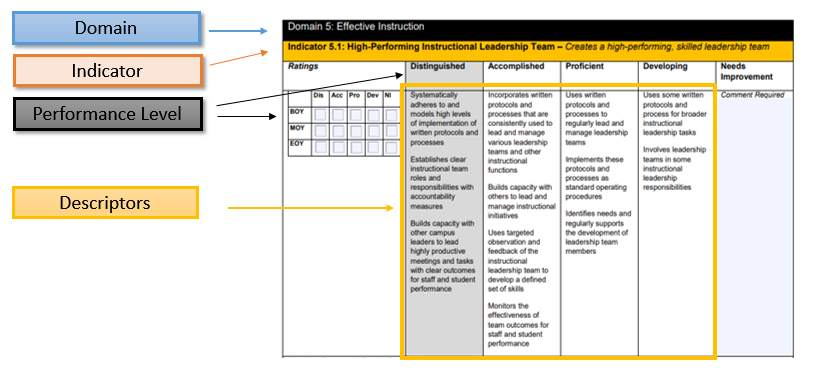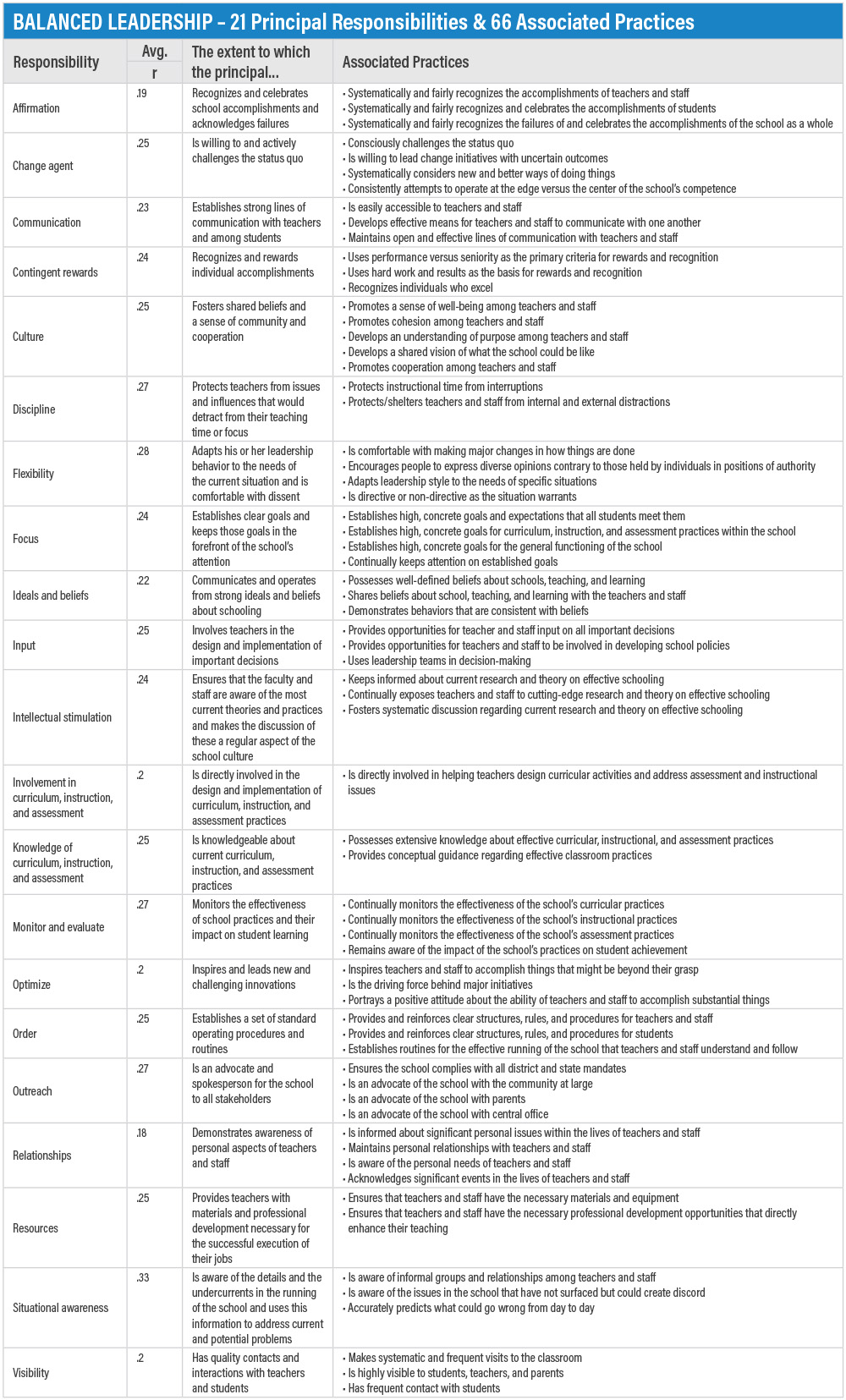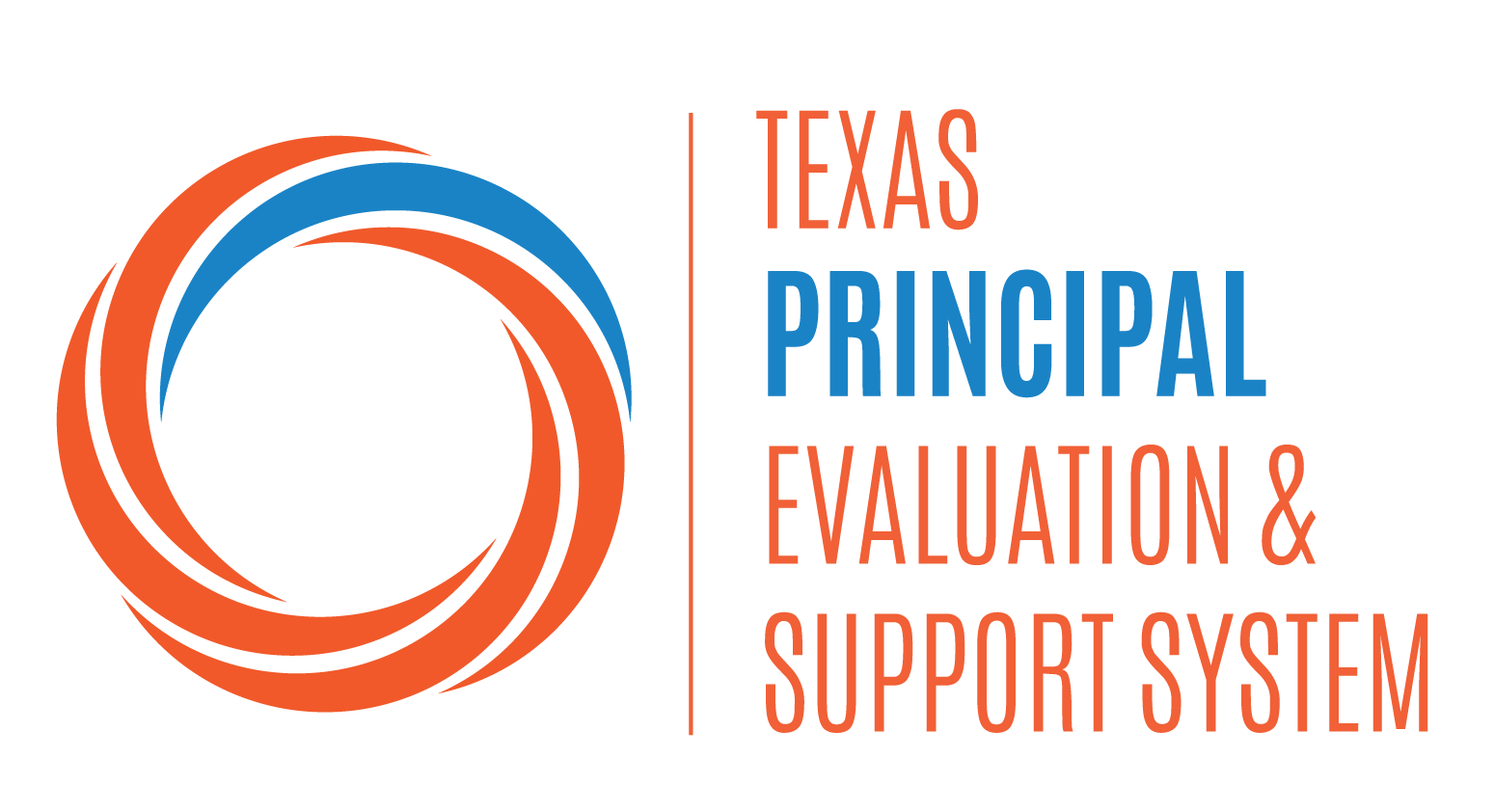T-PESS Rubric Design
The T-PESS rubric serves as the foundation for the appraisal process and incorporates a series of essential actions and practices that should be continuously applied. It is also directly tied to Texas Principal Standards the State's Effective Schools Framework, which provides the basis for school diagnostics and the alignment of resources. Its purpose is to give you a list of practices that improve instructional quality, school productivity, and student achievement. This formative, growth-oriented approach to your leadership assessment is based on four main components.
Rubric Four Main Components
Domain: Broad standard of principal leadership practice.
Performance Level: Assessment of performance or level of implementation of principal practice based on descriptors.
Indicator: Essential area or characteristic of the domain.
Performance Descriptors: Descriptors of the essential actions of principal leadership practice.

Rubric Performance Levels
Distinguished: Describes an exemplary level of performance that has a profound impact on both campus- and district-level performance. These exhibited practices serve as an exemplar for other principals and campus leaders and represents a distinct group of principals. Direct comment is required.
Accomplished: Describes highly skilled level of competence and automaticity with practices and performance that exceed proficiency.
Proficient: Describes demonstrated competence with practices and performance with expected proficiency of the standard.
Developing: Describes basic competence with practices and performance and requires direct oversight and/or growth toward achieving the standard at the proficient level.
Needs Improvement: Describes subpar competence with practices and performance and requires immediate growth. Direct comment is required.
Rubric Performance Indicators
Each standard is supported by four or five indicators, each providing general expectations for what you should know and be able to do in order to meet performance expectations of the domain. The descriptors that describe and differentiate the leadership practices and essential actions are detailed horizontally across the performance rating scale.
Rubric Performance Descriptors
The descriptors detailed in each performance level of T-PESS are more specific than with previous evaluation systems (Weisberg, Sexton, Mulhern, & Keeling, 2009) that didn't differentiate performance across ratings. The indicators for each domain include descriptors (leadership practices or essential actions) that are associated with evidence-based research (Marzano, Waters & McNulty, 2005) and nationally recognized leadership standards (ISLLC, 2008).
Research-Based Responsibilities & Practices
Using research on effective school-level leadership (Waters & Cameron 2007; Marzano, Waters & McNulty, 2005; Waters, Marzano & McNulty, 2003), the Steering Committee identified 21 specific leadership responsibilities and 66 associated practices that demonstrate a statistically significant link between principal leadership and student achievement. These 21 responsibilities have been strategically placed in a framework that will simplify the complex and demanding components of a principal's job. This framework will assist the principal in selecting the right work, effectively managing change while implementing strategic initiatives, and building resilient, purposeful communities of practice that help improve student outcomes.

Principal Competencies
A competency is a combination of factual and experiential knowledge and skills that a principal needs in order to do something effectively and efficiently, such as implementing T-PESS.
There are many competencies embedded within the descriptors in the T-PESS rubric. They are adapted from the nationally recognized Interstate School Leaders Licensure Consortium (ISLLC, 2008) school leadership standards developed by the Council of Chief State School Officers (CCSSO). A principal may or may not personally possess all of these competencies, but it is important to ensure that a team is in place on his or her campus that not only possesses them, but can effectively and efficiently execute them. This is the principal's opportunity to ensure the competencies are effectively used in leadership practices across his or her campus.
Communication: Effectively listens to others; clearly and effectively presents and understands information orally and in writing; acquires, organizes, analyzes, interprets, and maintains information needed to achieve school or team objectives.
Change Management: Effectively engages staff and community in the change process in a manner that ensures their support of the change and its successful implementation.
Conflict Management: Anticipates or seeks to resolve confrontations, disagreements, or complaints in a constructive manner.
Creative Thinking: Engages in and fosters an environment for others to engage in innovative thinking.
Customer Focus: Sees students as customers of the work of schooling, understands the servant nature of leadership, and acts accordingly.
Delegation: Effectively assigns work tasks to others in ways that provide learning experiences for them and in ways that ensure the efficient operation of the school.
Dialogue/Inquiry: Is skilled in creating a risk-free environment for engaging people in conversations that explore issues, challenges, or bad relationships that are hindering school performance.
Emotional Intelligence: Is able to manage oneself through self-awareness and self-management. This competency is critical to building strong, transparent, trusting relationships throughout the school community.
Environmental Awareness: Becomes aware of and remains informed about external and internal trends, interests, and issues with potential impacts on school policies, practices, procedures, and positions.
Global Perspective: Understands the competitive nature of the new global economy and is clear about the knowledge and skills students will need to be successful.
Judgment: Effectively reaches logical conclusions and makes high-quality decisions based on available information. Gives priority and caution to significant issues. Analyzes and interprets complex information.
Organizational Ability: Effectively plans one's own schedule and the work of others so that resources are used appropriately; for example, scheduling the flow of activities and establishing procedures to monitor projects.
Personal Ethics and Values: Consistently exhibits high standards in the areas of honesty, integrity, fairness, stewardship, trust, respect, and confidentiality.
Personal Responsibility for Performance: Proactively and continuously improves performance by focusing on needed areas of improvement and enhancing of strengths; actively seeks and effectively applies feedback from others; takes full responsibility for one's own achievements.
Responsiveness: Does not let issues, inquiries, or requirements for information go unattended. Creates a clearly delineated structure for responding to requests/situations in an expedient manner.
Results Orientation: Effectively assumes responsibility. Recognizes when a decision is required. Takes prompt action as issues emerge. Resolves short-term issues while balancing them against long term goals.
Sensitivity: Effectively perceives the needs and concerns of others; deals tactfully with others in emotionally stressful situations or in conflict. Knows what information to communicate and to whom. Relates to people of varying ethnic, cultural, and religious backgrounds.
Systems Thinking: Understands the interrelationships and impacts of school and district influences, systems, and external stakeholders, and applies that understanding to advancing the achievement of the school or team.
Technology: Effectively utilizes the latest technologies to continuously improve the management of the school or team.
Time Management: Effectively uses available time to complete work tasks and activities that lead to the achievement of desired work or school results. Runs effective meetings.
Visionary: Encourages "imagineering" by creating an environment and structure to capture stakeholder dreams of what the school could become for all the students.
